- Home
- TV History
- Network Studios History
- Cameras
- Archives
- Viewseum
- About / Comments
Skip to content


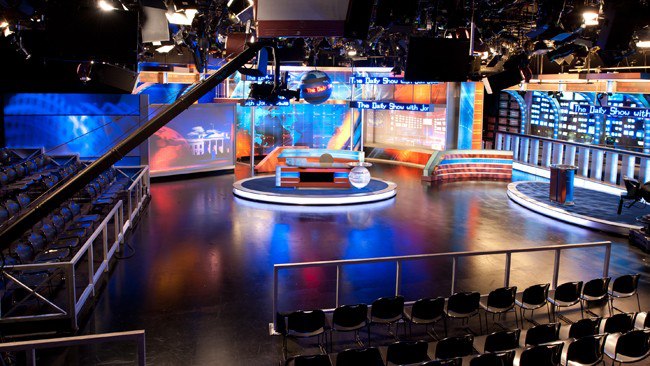

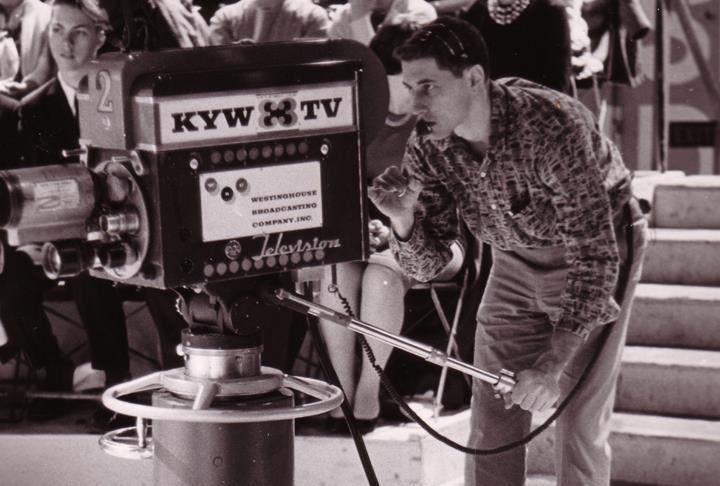





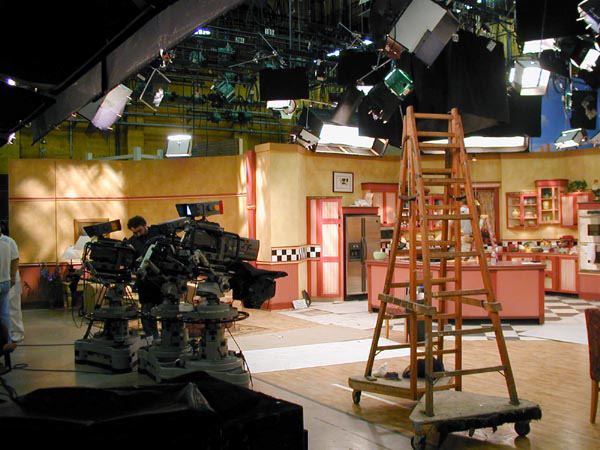

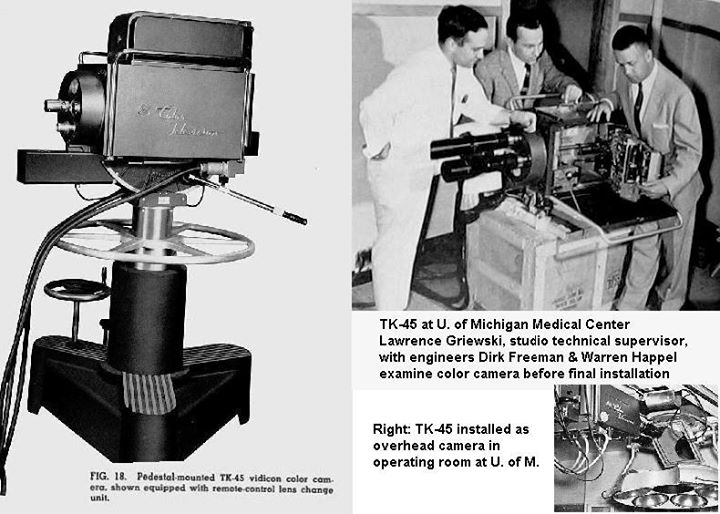

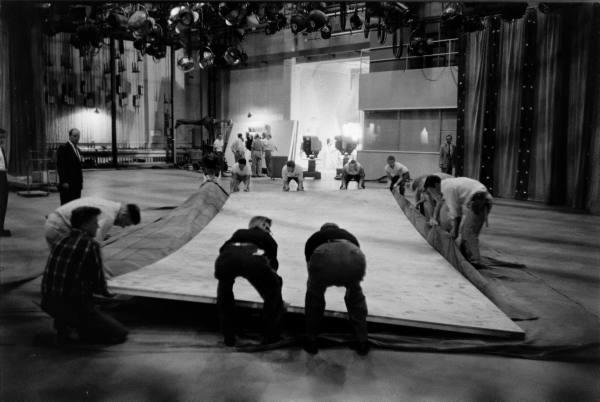

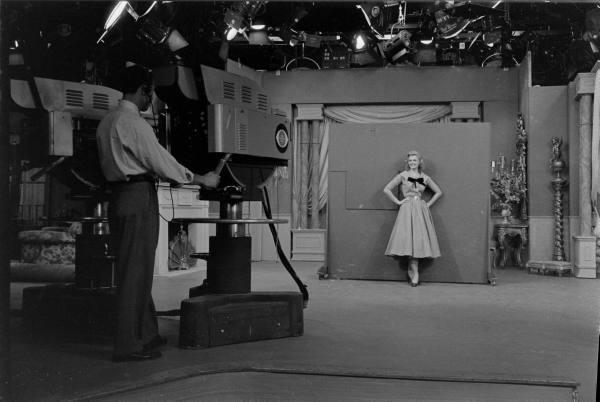

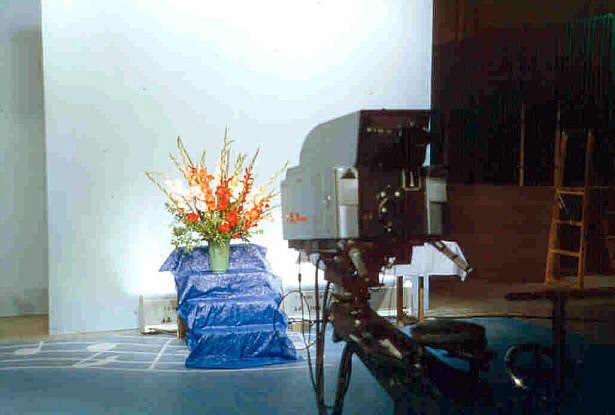

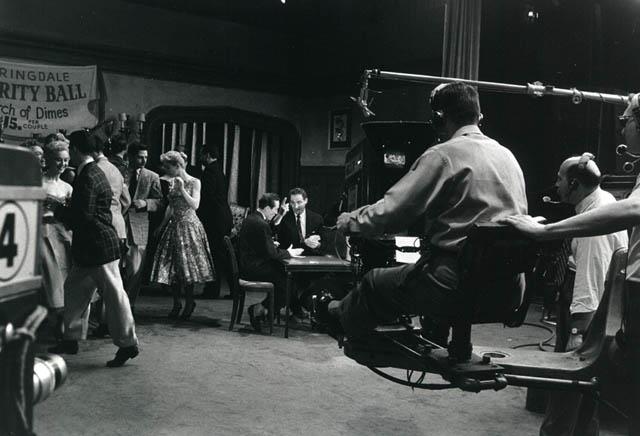

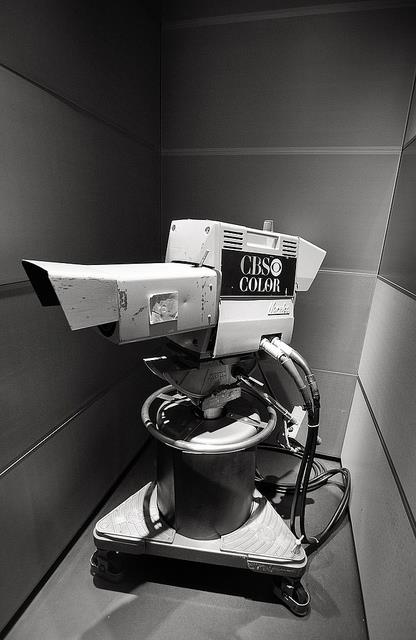

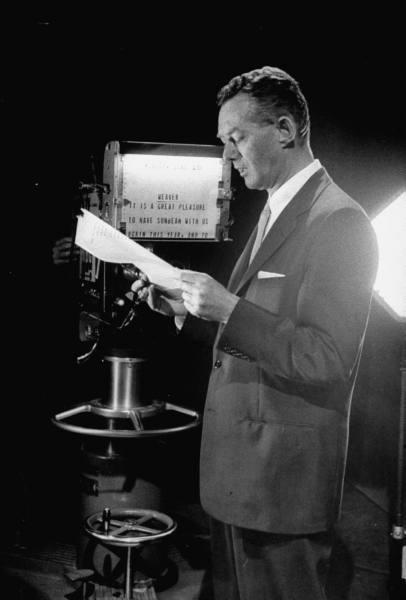



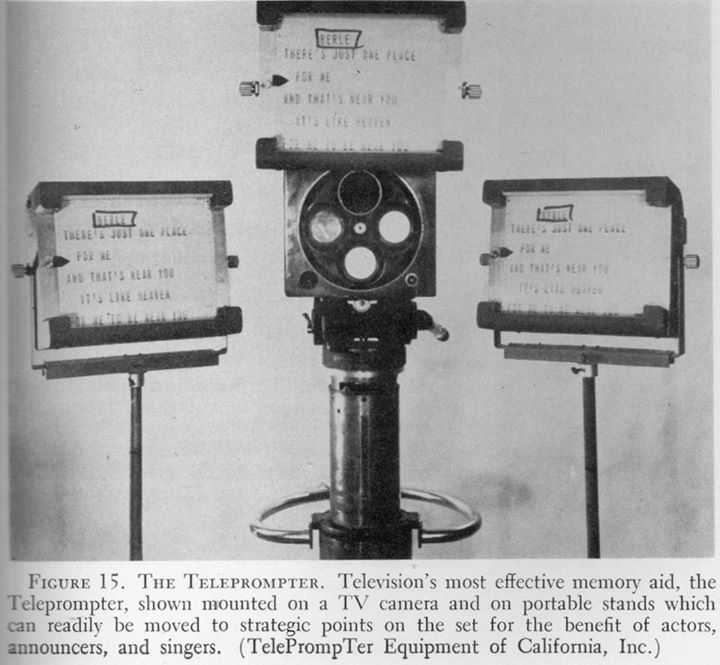

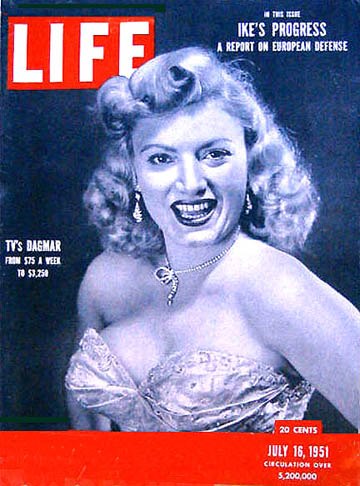

Posts in Category: TV History
Page 124 of 136
« Previous
1
2
3
4
5
6
7
8
9
10
11
12
13
14
15
16
17
18
19
20
21
22
23
24
25
26
27
28
29
30
31
32
33
34
35
36
37
38
39
40
41
42
43
44
45
46
47
48
49
50
51
52
53
54
55
56
57
58
59
60
61
62
63
64
65
66
67
68
69
70
71
72
73
74
75
76
77
78
79
80
81
82
83
84
85
86
87
88
89
90
91
92
93
94
95
96
97
98
99
100
101
102
103
104
105
106
107
108
109
110
111
112
113
114
115
116
117
118
119
120
121
122
123
124
125
126
127
128
129
130
131
132
133
134
135
136
Next » The Colbert Report Set, NEP’s Studio 54
On December 7, 2012
- TV History
The Colbert Report
This is the set in NEP’s Studio 54 in New York. It is a fully-equipped HD studio has: Sony HDC1450R cameras, Canon lenses, a Sony MVS-8000G Switcher, an Evertz Virtual Monitor Wall 162 Inputs, 5.1 Audio Monitoring, 24 channels of EVS, a variety of tape machines, SSL C100 Digital Audio Console w/ MADI, inbound and outbound fiber for transmission, and a full edit package with 6 Avid Nitris DX systems and a variety of tape machines.
The Daily Show With Set At NEP’s Studio 52
On December 7, 2012
- TV History
The Daily Show With John Stewart
This is the Daily Show set at NEP’s Studio 52 in New York. This fully-equipped HD studio has: Sony HDC1450R cameras, Canon lenses, a Sony MVS-8000G Switcher, an Evertz Virtual Monitor Wall 162 Inputs, 5.1 Audio Monitoring, 24 channels of EVS, a variety of tape machines, SSL C100 Digital Audio Console w/ MADI, inbound and outbound fiber for transmission, and a full edit package with 6 Avid Nitris DX systems and a variety of tape machines.
How Zsa Zsa Helped Mike Douglas Go From Live, To Videotape
On December 7, 2012
- TV History
Mike Douglas Show, TK10
This shot is from 1963, a couple of years into the show. It was live every weekday for an hour until around October of ’65. That’s when Zsa Zsa Gabor called Morey Amsterdam a “son of a bitch” for interrupting her joke. After that, the program aired on a one-day tape delay basis.


Letterman Messes With His Favorite Cameraman, Dave Dorsette…
On December 6, 2012
- TV History
Short Clip: Cameraman Dave Dorsette’s Interns
FYI, Dave retired a year or so again after 35 years at CBS but is back from time to time. Go Get Em Dave!
Karen’s a summer intern for Dave, the Cameraman


Original NBC Promos for ‘Late Night With David Letterman’ 1982
On December 6, 2012
- TV History
Original NBC Promos for ‘Late Night With David Letterman’ 1982
It’s been thirty years since these promos aired. From a tape recorded in 1982. Commercials pulled from a VHS found while working at the Sound Chamber in Roch…
The ‘Rosanne’ Set At CBS Studio Center
On December 5, 2012
- TV History
Honey, I’m Home!
Here’s the ‘Rosanne’ set at CBS Studio Center on Radford Avenue in Los Angeles with Grass Valley LDK cameras.
The RCA TK45: A 1960 (Medical Use) Color Camera Rarity
On December 5, 2012
- TV History
RCA TK45: 1960 Version
Built for the medical industry, this color camera was usually ceiling mounted and looked down at the operating table via a 45 degree mirror. I guess the TK11 type body with handles was needed to support it and that’s why it has a different configuration than the TK41. Here it is on a pedestal. Click to see the whole image. Thanks to Lytle Hoover at Old Radio,com for the photo.
CBS Television City Studio 36 & 46…Each Over 15,500 Square Feet
On December 4, 2012
- TV History
CBS Television City
Studio 36 and 46 are over 15,500 square feet each. Studio 41 and 43 are around 12,000 square feet each. That’s the kind of room it takes to do what they do. In the background, the RCA TK41s are out of the way as a giant piece of scenery is carefully prepared for erection.
Ann Palmer: CBS Color Girl At Television City
On December 4, 2012
- TV History
Ann Palmer: CBS Color Girl
At Television City, ‘Lady Ann’ spent as much time in front of their color cameras than most of the CBS stars. Very little color was done from CBS NY, and at TVC, color programs were on a rolling basis. Regularly scheduled shows would be done in color perhaps monthly or quarterly. Remember, it was 1970 before color sets outsold black and white sets.
In The Beginning…
On December 3, 2012
- TV History
In The Beginning…
In 1953 when the first RCA TK40 color cameras were arriving at NBC in New York, there was almost around the clock closed circuit testing with signals being sent from The Colonial Theater in NYC to RCA Labs in Princeton, NJ and Rockefeller Center. With no color patterns available, flower arrangements, fruit, color cloths and more were used to make a colorful picture.
The Colonial Theater was the main location for this but later, there were public demonstrations at the RCA Exhibition Hall in Rockefeller Center. During the day, a budding starlet named Nanette Fabre did a 90 minute Broadway musical type show from the Colonial Theater. Only the Colonial crew and the staff in Princeton and at 30 Rock saw it. She did it for two years till the monotony drove her to move on. This is probably an overnight set shot feed.
Sid Caesar: A True Icon
On December 3, 2012
- TV History
Sid Caesar: A True Icon Of Television
This photo is from Caesar’s Hour, taken in 1956 at the Century Theater in New York.
Sid Caesar began his television career when he made an appearance on Milton Berle’s Texaco Star Theater in 1948. In early 1949, Sid and Max Lieberman met with Pat Weaver, president of television at NBC, which led to Caesar’s appearance in his first series, The Admiral Broadway Revue with Imogene Coca.
The Friday show, simultaneously broadcast on NBC and the DuMont network in order for the show to be carried on the only TV station then operating in Pittsburgh. It was an immediate success. However, its sponsor, Admiral, an appliance company, could not keep up with the demand for its new television sets, so the show was cancelled after 26 weeks on account of its runaway success. According to Caesar, an Admiral executive later told him the company had the choice of building a new factory or continuing their sponsorship of Revue for another season.
On February 23, 1950, Caesar appeared in the first episode of Your Show of Shows, a Saturday night 90-minute variety program produced by Max Lieberman (who had previously produced The Admiral Broadway Revue). The show launched Caesar into instant stardom and was a mix of scripted and improvised comedy, movie and television satires, Caesar’s inimitable double-talk monologues, top musical guests, and large production numbers.
The show ended after 160 episodes on June 5, 1954. Just a few months later, Sid Caesar returned with Caesar’s Hour, a one-hour sketch/variety show with Howard Morris, Carl Reiner, a young Bea Arthur, and much of the seasoned crew. Nanette Fabray replaced Imogene Coca who left to star in her own short-lived series. Ultimate creative and technical control was now totally in Caesar’s hands. The show moved to the larger Century Theater, which allowed longer, more sophisticated productions and the weekly budget doubled to $125,000. The premier on September 27, 1954 featured Gina Lollobrigida.
An Original Walter Cronkite Camera
On December 1, 2012
- TV History
This Is The CBS Evening News With Walter Cronkite…
Out all of the 893 Norelco PC 60s and 70s ever made, this and it’s twin are probably the most famous. This PC60 and one just like it are the ‘Cronkite Cameras’ on display at The Newseum in Washington. They were saved, only by the grace of God and one of his angels…kind of.
When CBS retired the two cameras in the CBS Newsroom, they were donated to the Catholic Television Center in Boston. My friend Paul Beck received them and put them into service. A few years later newer cameras arrived and, being the angel he is, Paul knew to preserve this history and stored them in his basement. Even though his wife objected (sound familiar?), he kept them safe till a worthy home could be found. Fortunately, that was the Newseum and they are on permanent on display at their beautiful new home in Washington.
Meet Pat Weaver, First President of NBC Television
On November 30, 2012
- TV History
Meet Pat Weaver, First President of NBC Television
I could go on and on about Mr Weaver, but here’s the short version. I own the RCA TK30 (maybe the one in this photo) that NBC gave him as a token of appreciation from all of NBC’s employees in January of 1955. It was on display in his office.
The range of shows this camera could have worked on would have included all the shows that Pat either created, or brought to the network. The Today Show, The Tonight Show, The Home Show, The Colgate Comedy Hour, The Camel News Caravan, Howdy Doody, Your Show of Shows with Sid Caesar, The Texaco Star Theater with Milton Berle, The Tonight Show’s predecessor, Broadway Open House and lord knows what else. This is a rare shot as Pat made very few appearances on television. He actually created the magazine style of advertising that all broadcasters still use, in both radio and television. His book, “The Best Seat In The House” is great! It would make a fantastic Christmas gift.


Baseball…Breaking Records, And Camera Lenses
On November 29, 2012
- TV History
Another One Bites The Dust…
From Television’s POV, baseball is a much more violent sport than football. I wonder how many box lenses get smashed each season?
i dont own this
The Devil Made Him Do It! Flip Wilson’s Hilarious “Tonight” Debut
On November 28, 2012
- TV History
The Devil Made Him Do It! Must See History…
A few months before this video, Johnny Carson asked Redd Fox who the funniest new comic around was. Redd’s answer was Flip Wilson. On September 30, 1965 Flip made his first of many Tonight Show appearances. At the end this 2:00 clip, it takes Johnny :40 seconds to stop laughing long enough to say, “that’s one of the funniest lines I’ve ever heard in my life”.
Flip Wilson tells his famous ‘Ugly Baby’ joke.
A Teaching Moment: Setting The Record Straight
On November 28, 2012
- TV History
A Teaching Moment: Setting The Record Straight
Few know that ‘I Love Lucy’ Producer-Director Jess Oppenheimer holds the patent for the “in the lens” teleprompter. This is the same reflector/mirror system we use today, but first used on television by Lucille Ball and Desi Arnaz, for a filmed Philip Morris cigarette commercial which aired on “I Love Lucy” on December 14, 1953. I don’t know why the “in the lens” design from Oppenheimer didn’t catch on till the mid to late 60s, but a bit more history may reveal the answer.
Let’s start with the obvious question. Were there teleprompters before this? Yes. The mechanical paper roll models…free standing and camera mounted as seen here.
The device started out in 1948 as a roll of butcher paper rigged up inside half of a suitcase. Actor Fred Barton Jr., a Broadway veteran, was nervous. “For those that had been either in theater or the movies, the transition to television was difficult, because there was a much greater need for memorizing lines,” says Christopher Sterling, a media historian at George Washington University. “At the time, there was a lot more live television, which many people today tend to forget.” Instead of memorizing the same batch of lines over the course of months, Barton was now expected to memorize new lines on a weekly or even daily basis. Cue cards were sometimes used, but relying on unsteady stagehands to flip between them could sometimes cause catastrophic delays.
Barton went to Irving Kahn, a vice president at 20th Century Fox studios, with the idea of connecting cue cards in a motorized scroll, so he could rely on prompts without risking an on-screen blunder. Kahn brought in his employee Hubert Schlafly, an electrical engineer and director of television research, and asked him if it could be done. “I said it was a piece of cake,” Mr. Schlafly told the Stamford Advocate in 2008. Using half of a suitcase as an outer shell for his new device, he rigged up a series of belts, pulleys and a motor to turn a scroll of butcher paper that displayed an actor’s lines in half-inch letters. The paper was turned gradually, as controlled by a stagehand, while the words were read.
On April 21, 1949, Schlalfly submitted a patent application for his “television prompting apparatus,” and in the tradition of offstage “prompters” who had been relied upon to feed forgotten lines to actors, he called his device the TelePrompTer. When the application was approved, the New York Times noted that it “coaches television actors into letter-perfect delivery of their lines and permits news commentators to simulate prodigious feats of memory.” It may have seemed unlikely at the time, but a new political age was born.
Although Schlafly, Barton and Kahn pitched the device to 20th Century Fox, the company was not interested. They promptly quit the company and started their own, founding the TelePrompTer Corporation. At first, the machine was used for its intended purpose: televised entertainment. It was part of a live production for the first time on December 4, 1950, as actors in the CBS soap “The First Hundred Years” read their lines off a device mounted to the side of the camera. “Initially, it was either above or below the lens of the camera, or to the right or the left, so you could always tell, unfortunately, because you could see the person’s eye was slightly off,” Sterling says.
Quickly, others saw just how useful teleprompters could be—and as they began adding their own refinements, the term itself became a generic catchall for all sorts of automatic prompting devices. The TelePrompTer Corporation kept making their product, but many others began designing their own versions. Jess Oppenheimer, the producer of “I Love Lucy,” took out a patent for the first in-camera teleprompter, which used a system of mirrors and glass to project the script directly in front of the lens. “Once you could literally shoot through the teleprompter, the on-screen talent was looking straight at the audience,” Sterling says. “Home viewers saw a smoother presentation, with a hell of a lot more eye contact.” Soon, broadcast news operations started using the machine, replacing the printed scripts anchors had previously held in their hands, starting at the network level and then filtering down to local markets.
By the time the next presidential election rolled around, in 1952, Kahn saw the next frontier for his device. After reading that aging former President Herbert Hoover had had difficulty reading speeches while campaigning for Gen. Dwight D. Eiseinhower, Kahn traveled to Chicago, the host city for the Republican National Convention, and persuaded Hoover and other speakers to try out the machine. The technology was an immediate hit—between that convention and the Democratic gathering later that month, 47 of the 58 major speeches were teleprompted. Two months later, though, candidate Eisenhower gave the technology an inadvertent publicity boost that allowed it to become legendary. It was used for a State of the Union address for the first time in 1954 by Eisenhower himself.
Over the years, subtle advances in teleprompter technology continued. Into the early ’80s, the text was typically still printed on pieces of paper—the National Museum of American History has the teleprompter text of Walter Mondale’s 1984 Democratic National Convention nomination acceptance speech where he notoriously admitted “Mr. Reagan will raise taxes, and so will I. He won’t tell you. I just did.”
Starting in 1982, though, when Hollywood sound mixer and stagehand Courtney M. Goodin created Compu=Prompt—a software-based system that projected text from a modified Atari 800 PC—computers began to displace printed scrolls across the industry. Computerized systems held several advantages, including the fact that text could be edited and loaded at the last second. Still, in rare instances, technical difficulties with software have forced speechmakers into thinking on their feet. For Bill Clinton’s 1994 State of the Union Address, the machine was loaded with the wrong speech, so he began his live speech off-the-cuff and from memory until the correct text appeared.
Most recently, voice-recognition software has allowed for systems that automatically scroll text based on the speaker’s actual rate of speech.
Despite the remarkable journey of his invention from makeshift line prompter to the ubiquitous centerpiece of every campaign, for the vast majority of his life, Hubert Schlafly never had the experience of using a teleprompter himself. Shortly before he died though, he finally tried it out, when he was inducted into the Cable Television Hall of Fame in 2008. As he stood on stage, his 88-year-old voice straining, he read his speech, repeatedly shifting back and forth, left and right.
The Original Mickey Mouse Club’s Broadcast History
On November 24, 2012
- TV History
The Original Mickey Mouse Club’s Broadcast History
The series ran on ABC Television for an hour each weekday in the 1955–1956 and 1956–1957 seasons (from 5:00 to 6:00 pm ET), but went to a half-hour show in the ’57-58 season airing weekdays (5:30 to 6:00 pm ET). This was the final season to feature new programming on the original Mickey Mouse Club.
Although the show returned for the 1958–1959 season (5:30 to 6:00 pm ET), these programs were actually footage from the first two seasons, re-cut into a half-hour format. The Mickey Mouse Club was featured on Mondays, Wednesdays and Fridays, and Walt Disney’s Adventure Time, featuring re-runs of The Mickey Mouse Club serials and several re-edited segments from Disneyland and Walt Disney Presents, appeared on Tuesdays and Thursdays. The animated intro linked here is an ingenious creation that has many edit points to adjust the length of the intro after the rest of the show has been edited together.
Although the show remained popular, ABC decided to cancel the show after its fourth season, as Disney and the ABC network could not come to terms for renewal. The cancellation in September 1959 was attributable to several factors: the Disney studios did not realize high-profit margins from merchandise sales, the sponsors were uninterested in educational programming for children, and many commercials were needed in order to pay for the show. ABC wanted to add more commercials…Disney did not want more.
After canceling The Mickey Mouse Club, ABC also refused to let Disney air the show on another network. Walt Disney filed a lawsuit against ABC, and won the damages in a settlement; however, he had to agree that both the Mickey Mouse Club and Zorro could not be aired on any other major network.
In response to continuing audience demand, the original Mickey Mouse Club went into edited syndicated half-hour reruns that enjoyed wide distribution starting in the fall of 1962, achieving strong ratings especially during its first three seasons in syndicated release. Because of its popularity in some markets, a few stations continued to carry it into 1968 before the series was finally withdrawn from syndication. Some new features were added such as Fun with Science, aka “Professor Wonderful” (with scientist Julius Sumner Miller) and Marvelous Marvin in the 1964–1965 season; Jimmie Dodd appeared in several of these new segments before his death in November 1964. Many markets stretched the program back to an hour’s daily run time during the 1960s rerun cycle by adding locally produced and hosted portions involving educational subjects and live audience participation of local children.
OLD MICKEY MOUSE CLUB intro…1960
Memory Lane And Coon Skin Caps
On November 24, 2012
- TV History
Memory Lane And Coon Skin Caps
About half way into this 6 minute clip, Annette takes us to Disney’s Studio 3 where the Mickey Mouse Club was shot and tells us about the ‘other’ big Disney show on ABC…’Disneyland’. Lots of Davy Crockett memories in the second half too.
1950s
Network TV’s First Late Night Comedy: Broadway Open House
On November 23, 2012
- TV History
Network TV’s First Late Night Comedy: Broadway Open House
Broadway Open House was network television’s first late-night comedy-variety series and was telecast live on NBC from May 29, 1950 to August 24, 1951, airing weeknights from 11pm to midnight. One of the pioneering TV creations of NBC president Pat Weaver, it demonstrated the potential for late-night programming and led to the later development of The Tonight Show in 1954.
Hosting different nights each week, were Morey Amsterdam (Monday and Wednesday) and the raucous Jerry Lester (Tuesdays, Thursdays and Fridays). Amsterdam soon exited the show, leaving Lester the sole host, performing sketches with his crew of sidekicks, running through standard nightclub comedy routines and introducing the show’s vocal group, the Mello Larks.
Devising new material night after night became a treadmill of desperation. The solution was to hire bosomy blonde Jennie Lewis, who was given no script and told, “You just sit there and act dumb. Your name is Dagmar.” With her new name, she sat on a stool with a sign around her neck saying “Girl Singer,” did breathing exercises, and soon performed as a reader of poems and plays, while Lester made occasional jokes about her “hidden talents.”
Dagmar created a sensation, leading to much press coverage and a salary increase from $75 to $1,250. With Dagmar getting all the attention, Lester walked off his own show in May 1951, and Dagmar carried on as host. On July 16, 1951, she was featured on the front cover of Life, and the show came to an end one month later.
Dagmar’s run on Broadway Open House and her appearances on other shows (Colgate Comedy Hour, The Milton Berle Show, Masquerade Party) made her the first major female star of television, and she soon had her own show, Dagmar’s Canteen, making guest appearances during the late 1950s with Jack Paar on The Tonight Show.
Happy Thanksgiving From WKRP!
On November 22, 2012
- TV History
Happy Thanksgiving To All!
Here’s a funny little holiday clip from WKRP. Enjoy the day and each other!
WKRP “As God as my witness, I thought turkeys could fly” Thanksgiving
Page 124 of 136
« Previous
1
2
3
4
5
6
7
8
9
10
11
12
13
14
15
16
17
18
19
20
21
22
23
24
25
26
27
28
29
30
31
32
33
34
35
36
37
38
39
40
41
42
43
44
45
46
47
48
49
50
51
52
53
54
55
56
57
58
59
60
61
62
63
64
65
66
67
68
69
70
71
72
73
74
75
76
77
78
79
80
81
82
83
84
85
86
87
88
89
90
91
92
93
94
95
96
97
98
99
100
101
102
103
104
105
106
107
108
109
110
111
112
113
114
115
116
117
118
119
120
121
122
123
124
125
126
127
128
129
130
131
132
133
134
135
136
Next »